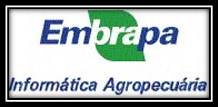Team:UNICAMP-EMSE Brazil
From 2011.igem.org
Neshich.iap (Talk | contribs) |
Neshich.iap (Talk | contribs) |
||
| Line 96: | Line 96: | ||
</html> | </html> | ||
| + | ==About Brazil== | ||
| + | <html> | ||
| + | <iframe width="480" height="390" src="http://www.youtube.com/embed/kAm0rpIh2SQ" frameborder="0" allowfullscreen></iframe> | ||
| + | </html> | ||
| + | |||
| + | ==About France== | ||
<br> | <br> | ||
Revision as of 01:54, 13 September 2011

| Home | Project | Methods | Results | Data | Team | Notebook | Human Practices | Safety | Profile | Sponsors | Wix |

Contents |
Welcome to the UNICAMP-EMSE team Wiki for iGEM 2011!
Prepare yourselves for a great battle: THE STRESS WARS!
Our project: Stress wars
The human immune system comprises a wide range of cells and mechanisms finely regulated to maintain body's homeostasis against eventual threads. However, pathological conditions, such as stress and autoimmune diseases, can cause imbalances in its action rendering higher susceptibility to potential pathogens. This imbalance is ultimately observed in the biased differentiation of naive T-CD4+ Lymphocytes towards T-lymphocyte "helper" class 1 (Th1), in autoimmune diseases, or 2 (Th2), in stressful condition, favoring cellular or humoral adaptive responses, respectively. This pathological imbalance renders the organism more susceptible to the onset of diseases caused by microorganisms. Thus, a mechanism that counteracts this imbalance is highly desirable. The aim of our project is to use the ability of some microorganisms to sense changes in the host´s body homeostasis, used by them as a signal to trigger expression of virulence factors, to counteract this pathological imbalance. In this sense, the ability of some gut-inhabiting bacteria to sense cathecolamines, which can reach high levels on the gastro-intestinal tract during stress, will be used to trigger the production of IL-12, a potent activator of Th1, to counteract the preferential differentiation towards Th2. On the other hand, the ability to sense Nitric-Oxide (NO), a compound released at higher levels in inflammatory conditions, will be used to trigger the production of IL-10, a cytokine with a potent anti-inflammatory action. To switch between both responses, a mechanism that can break down the opposite signaling molecule on the recognition of the first signal will be developed. The microorganism bearing these devices will thus be able to restore the appropriate balance between Th1 and Th2 cells in the host's organism, thus counteracting harmful outcomes of this condition and, hence, improving human life quality.
About Brazil
About France
- We kindly thank our sponsors:
- We kindly thank our sponsors:
- Support:
- Support:
 "
"










